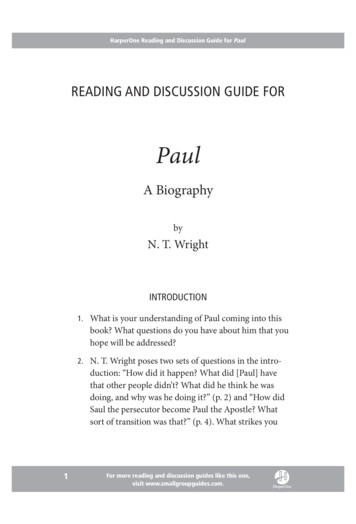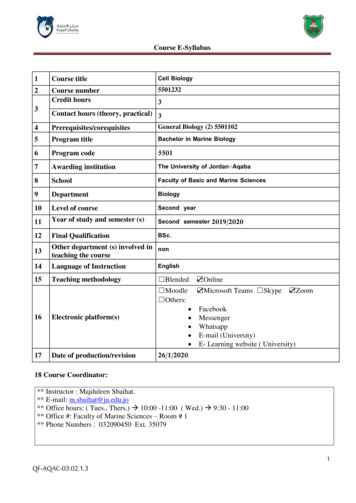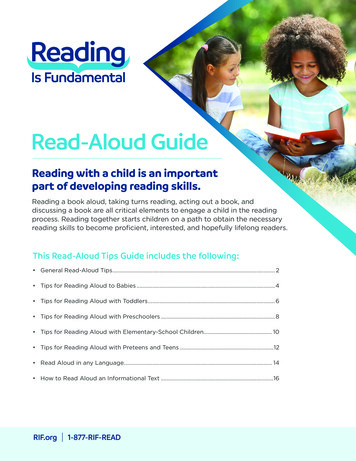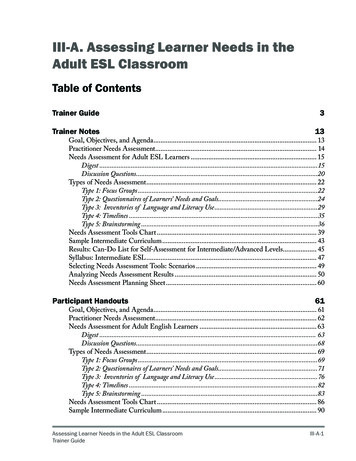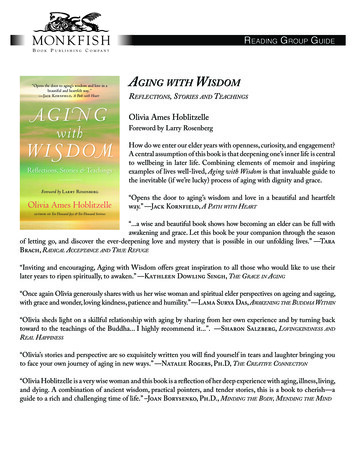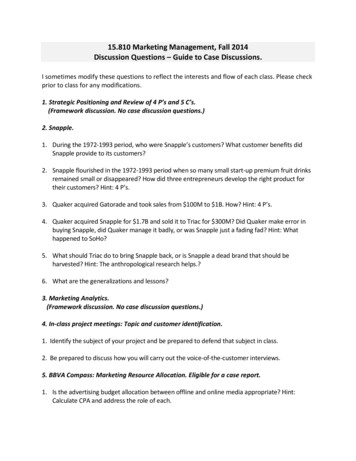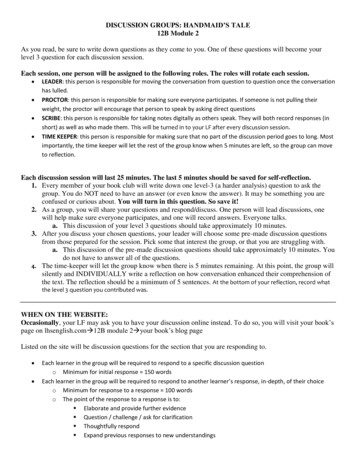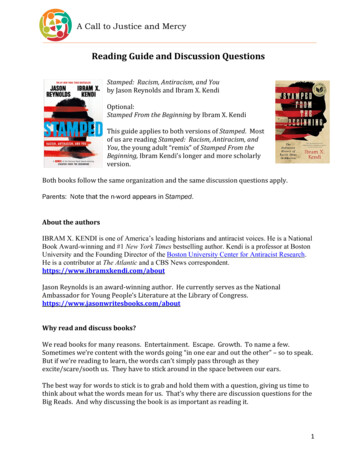
Transcription
A Call to Justice and MercyReading Guide and Discussion QuestionsStamped: Racism, Antiracism, and Youby Jason Reynolds and Ibram X. KendiOptional:Stamped From the Beginning by Ibram X. KendiThis guide applies to both versions of Stamped. Mostof us are reading Stamped: Racism, Antiracism, andYou, the young adult “remix” of Stamped From theBeginning, Ibram Kendi’s longer and more scholarlyversion.Both books follow the same organization and the same discussion questions apply.Parents: Note that the n-word appears in Stamped.About the authorsIBRAM X. KENDI is one of America’s leading historians and antiracist voices. He is a NationalBook Award-winning and #1 New York Times bestselling author. Kendi is a professor at BostonUniversity and the Founding Director of the Boston University Center for Antiracist Research.He is a contributor at The Atlantic and a CBS News on Reynolds is an award-winning author. He currently serves as the NationalAmbassador for Young People’s Literature at the Library of Congress.https://www.jasonwritesbooks.com/aboutWhy read and discuss books?We read books for many reasons. Entertainment. Escape. Growth. To name a few.Sometimes we’re content with the words going “in one ear and out the other” – so to speak.But if we’re reading to learn, the words can’t simply pass through as theyexcite/scare/sooth us. They have to stick around in the space between our ears.The best way for words to stick is to grab and hold them with a question, giving us time tothink about what the words mean for us. That’s why there are discussion questions for theBig Reads. And why discussing the book is as important as reading it.1
A Call to Justice and MercyIt’s not the author’s exact words we want to hold on to but the ideas and meaning that wemake of those words. We’re after lightbulb moments. We want to say, “Gee, I neverthought of that!” and “I didn’t know that!”Stretching our brain with new ideas is not unlike stretching any muscle. It creates tension– like a rubber band. New thoughts pull and tug the old. Some may feel unwelcome. Likeany workout, it’s uncomfortable. The “feel good” part happens after!Stamped BackgroundThe title of Stamped is from a speech given by Mississippi senator Jefferson Davis in thesenate on April 12, 1860. He was objecting to a bill funding Black education inWashington, D.C. (Davis went on to serve as President of the Confederate States from1861-1865.) In his speech, Davis said: “This Government was not founded by negros norfor negros [but] by white men for white men [. the] inequality of the white and black races[.] was stamped from the beginning”. The implication of “stamped from the beginning”was that it was part of God’s creation and not for anyone to challenge or undo.Stamped: Racism, Antiracism, and You for young adults, published in 2020, is called a“remix” of Ibram Kendi’s Stamped from the Beginning, published in 2016. Not only is it aremix, it’s half as long!Kendi wrote Stamped from the Beginning because he found the histories of race incompleteand inaccurate. The history of race in the United States is not a straight line of progress to apost-racial society. As Kendi notes, “There is, and has always been, a persistent line ofantiracist thought in this country.” Yet there is, and has always been, a persistent line ofracist thought as well. These histories do not play out as a good versus evil story with goodwinning in the end or a story of half-baked ideas being supplanted by rational ones. It’smore complicated than that.Kendi sought the source of these ever present racist and antiracist ideas. And as he did, herealized what he had been taught was a “popular folktale of racism” .that “ignorant andhateful people had produced racist ideas, and that these racist people had instituted racistpolicies.”What he discovered through research was the opposite. Racist ideas didn’t cause racistpolicies. Rather, racist policies caused racist ideas. Kendi writes, “But when I learned themotives behind the production of racist ideas, it became obvious that this folktale, thoughsensible, was not true. I found that the need of powerful people to defend racist policiesthat benefited them led them to produce racist ideas, and when unsuspecting peopleconsumed these racist ideas, they became ignorant and hateful.”Stamped takes us on a fast-paced journey not along a single line of progression, but twoseparate lines, one of racist ideas and the other anti-racist. It’s these ideas that we have2
A Call to Justice and Mercystamped into our history and culture from the beginning. And as Kendi shows, just asracist ideas can be stamped in, they can also be stamped out.How to read StampedPatterns not detailsStamped is a history book covering 400 years. It covers a lot of ground. It goes wide, notdeep, to give us the big picture. We’re not reading Stamped (especially the shorter youngadult version) for the details. Rather, we’re reading it to see the patterns repeated in thevarious historical time periods. Leaving us with the question – what patterns are repeatingnow?Stamped begins with the Introduction (or Prologue) in which Kendi explains the lensesthrough which he’s looking at the history of racism. His lenses are racist and anti-racistideas – the definition of each -- and he looks through them like a scientist looks through amicroscope onto five periods of time in the United States.Five sectionsEach period of time is a section in the book, each with multiple chapters and a variednumber of pages to read.Section 1:Section 2:Section 3:Section 4:Section 5:1415-1728, 36 pages1743-1826, 38 pages1826-1879, 30 pages1868-1963, 48 pages1963-Today, 80 pagesReading tips: Read a section and pause.Answer the Section Questions in this guide.Note: Use these the section questions with your conversation partner(s) if you arediscussing each section.A human tour guide for each sectionReynolds and Kendi pick one historical figure from each time period (section) as a tourguide for that time in history. Their story is entwined with the history of racist/anti-racistideas in their day. Each of these figures – Cotton Mather, Thomas Jefferson, Abraham3
A Call to Justice and MercyLincoln, etc. – is a product of their time. Each had racist and/or anti-racist positions duringtheir lifetime and each influenced the beliefs of others.Yet each of these influencers was human. Reynolds and Kendi do not hold them up asparagons. Their positions were at various times conflicting, shifting, vague or even, to oursensibilities, peculiar. Cotton Mather, for example, merged racist ideas with his beliefsabout witches.By including the stories of these historical figures – and looking at them through Reynold’sand Kendi’s racist/anti-racist lenses – we see what racist and anti-racist ideas-in-actionlook like. Having the skill to recognize racist/anti-racist ideas and actions back then helpsus recognize them right now.Other material on the history of racism in the United States The National Museum of African American History – part of the SmithsonianInstitution – offers an excellent overview of the history of ace/topics/historical-foundations-race Watch this 10-minute video from PBS on the origin of race in the U.S.https://www.youtube.com/watch?time continue 4&v CVxAlmAPHec&feature emb logoDiscussing Stamped with a conversation partner, family or friendsWe learn new things from reading a book or watching a movie. Even deeper learninghappens when we talk about the book or movie with someone else.Plan to talk about Stamped with someone you trust and can be candid with: Find a conversation partner. This can be a friend, a spouse or partner, a parent.AND/OR,Talk as a family. AND/OR,Talk in your Bethel small group such as a women’s circle, book group, men’s group,youth group, XYZ, etc.Then, Agree to carve out time for discussion with minimal distractions. Will you talk afterreading the entire book? After each section? Block the time. Use the suggested discussion questions and add your own.4
A Call to Justice and MercySECTION QUESTIONS Use these questions to reflect on the section after you finish reading it.Discuss these questions with a conversation partner or your family if you arediscussing each section.Introduction (“Dear Reader”) Why study the history of racism?Did you learn the same “folktale” as Kendi – that ignorance and hate led to racistideas which led to racist policies?What’s your reaction to Kendi’s discovery that the cause/effect is the other wayaround – racist policies led to racist ideas to justify the policies?In the Introduction Kendi shares his own experience with racist thinking. Why doeshis candor and honesty matter to readers? To you?Section 1: 1415-1728 The first chapter defined segregationists, assimilationists, and antiracists. In theIntroduction, Kendi says that both segregationists and assimilationists are racistpositions. How so? How was Christianity used to support racist ideas? There were some odd theories “back then” like climate theory (Black people wouldturn white if they lived in a cooler climate), curse theory (Noah’s son Ham) andpolygenesis (Africans aren’t human). How can we differentiate a good idea from abad one? How did you feel after reading this section?Section 2: 1743-1826 How are your observations of or experiences with racism tied to the list of racistideas in Chapter 6? The authors introduce the concept of “uplift suasion,” the idea that white peoplewould become less racist if they saw Black people lifting themselves up – going tochurch, speaking “proper” English, and living like white people. How did thisassimilationist strategy perpetuate racist ideas? How does this strategy persisttoday? How does the book’s portrayal of the American founding and Thomas Jeffersoncompare to what you learned? How does this history complicate the mythology? The Enlightenment was a new intellectual era associated with light and white. Light(and white) equaled reason and dark was ignorance. These ideas were used tojustify a racial hierarchy. Where do we see these ideas in our culture today? One of Kendi’s key arguments is that racist policies that serve the interests of thepowerful have driven the development of racist ideas and not the other way around.How does this cause-effect show up in this section?5
A Call to Justice and MercySection 3: 1826-1879 This section includes Harriett Beecher Stowe and her best-selling novel Uncle Tom’sCabin. In what ways is the book racist? How did it draw northerners to theabolitionist movement?In Stamped, we read that Garrison “transformed abolitionism from a messy politicalstance (like Jefferson’s) to a simple moral stance. Slavery was evil and it was themoral duty of the United States to eliminate the evil of slavery.” In Stamped Fromthe Beginning, Kendi includes this quote by Garrison, “We must give up the spirit ofcomplexional caste” or “give up Christianity.” In other words, it isn’t only slaverythat’s evil. We can’t have a social hierarchy based on race and be Christian. Whatare the implications of Garrison’s words back then? Today?The authors suggest that Lincoln emancipated slaves for political reasons ratherthan the moral argument that Black people were equal. How does this square withyour impression of Lincoln?Early on, Garrison believed that freedom for Blacks should be incremental but laterhe believed that freedom should be immediate – right now. He changed his mind.What can we learn from this?Section 4: 1868-1963 W.E.B. Du Bois was one of the most influential African American leaders in the early20th century. In his book, The Souls of Black Folk, Du Bois introduced doubleconsciousness – “A self that is Black and a self that is American.” He called hisdouble conscious group the “Talented Tenth” – the top 10% of Black America. Howdoes double consciousness and the “talented tenth” play out in our culture today?Why did Du Bois move from being an assimilationist to an antiracist?Books and movies like Tarzan and Birth of a Nation have had a big role in formingand reinforcing racist ideas. What current movies/TV shows promote racist ideas?A eugenics movement began to emerge with IQ tests and standardized tests to provethat Black people were inferior. Where do you see eugenics today? What can bedone about it?Reynolds calls the 13th, 14th, and 15th Amendments examples of a “big deal” that isfar from being a “done deal.” Why are these constitutional amendments not “donedeals?”Section 5: 1963-Today How are Angela Davis’ ideas on racism different from other anti-racists such as DuBois, Martin Luther King, William Lloyd Garrison, and others?6
A Call to Justice and Mercy When describing Black political movements Reynolds writes, “The shift went fromfighting for civil rights to fighting for freedom. The difference between the two issimple. One implies a fight for fairness. The other, a right to live.” What is thedifference between fairness and a right to live? Was Martin Luther King fighting forcivil rights or for freedom?Why have the different approaches of assimilationism and uplift suasion thinkingnot been helpful in dispelling racism?How has racism changed, improved, or worsened throughout American history? Doyou think the problems of racism today are worse than 30 years ago.Reynolds notes how Richard Nixon would reference Black people in his speecheswithout ever saying “Black and “white” by using words like “urban” and “ghetto”.What are other words in our culture that invoke race without mentioning race?At the beginning of Stamped and in chapter 13, Reynolds asserts, “Life rarely fitsneatly into a box. People are complicated and selfish and contradictory.” Who aresome of the complicated political figures with respect to their ideas about race, pastand present? What makes them complex?Discussion questions for the entire book Why study the history of racist ideas?Why does Jason Reynolds say that Stamped is not a history book?The book lays out three positions: segregationist, assimilationist, and antiracist.How do these patterns repeat in history? Where do you see these ideas today?What were you surprised to learn?What did you read that caused you to have a strong reaction for it? Against it?Why?Kendi challenges conventional thinking when he says that racist policies that servethose in power have driven the development of racist ideas, not the other wayaround. How does this cause-effect show up in the book?At the beginning of Stamped and in chapter 13, Reynolds writes, “Life rarely fitsneatly into a box. People are complicated and selfish and contradictory.” Who aresome of the complicated political figures with respect to their ideas about race, pastand present? What makes them complex?Both William Lloyd Garrison and W.E.B. DuBois changed their positions on race. Forexample, DuBois moved from assimilationism to antiracism. Why did they changetheir positions? What can we learn from this?Why have the different approaches of assimilation and uplift suasion not beenhelpful in dispelling racism?How has Christianity been used to support racist ideas?As seen with books and movies like Tarzan, Planet of the Apes, Rocky, and Gone WithThe Wind, pop culture and media have had a big role in reinforcing racist ideas.7
A Call to Justice and Mercy What more recent movies, TV shows, and stories promote racist ideas and how?What then?Racism is so embedded in our lives that even everyday expressions associateBlackness with negativity. Examples include words like black sheep, blackballing,blacklisting, and black mark. Other words include minority, ghetto, and inner city.What are more words? What can we do about this?How has racism changed, improved, or worsened throughout American history? Doyou think the problems of racism today are better or worse than 30 years ago?Although published as a book for young people, how do readers of all ages benefitfrom Stamped?How have you/your family/your group benefitted from reading Stamped?Why is it necessary for us as Christians to know the history of racist ideas?8
In Stamped, we read that Garrison “transformed abolitionism from a messy political stance (like Jefferson’s) to a simple moral stance. Slavery was evil and it was the moral duty of the United States to eliminate the evil of slavery.” In Stamped From the Beginning, Kendi includ
